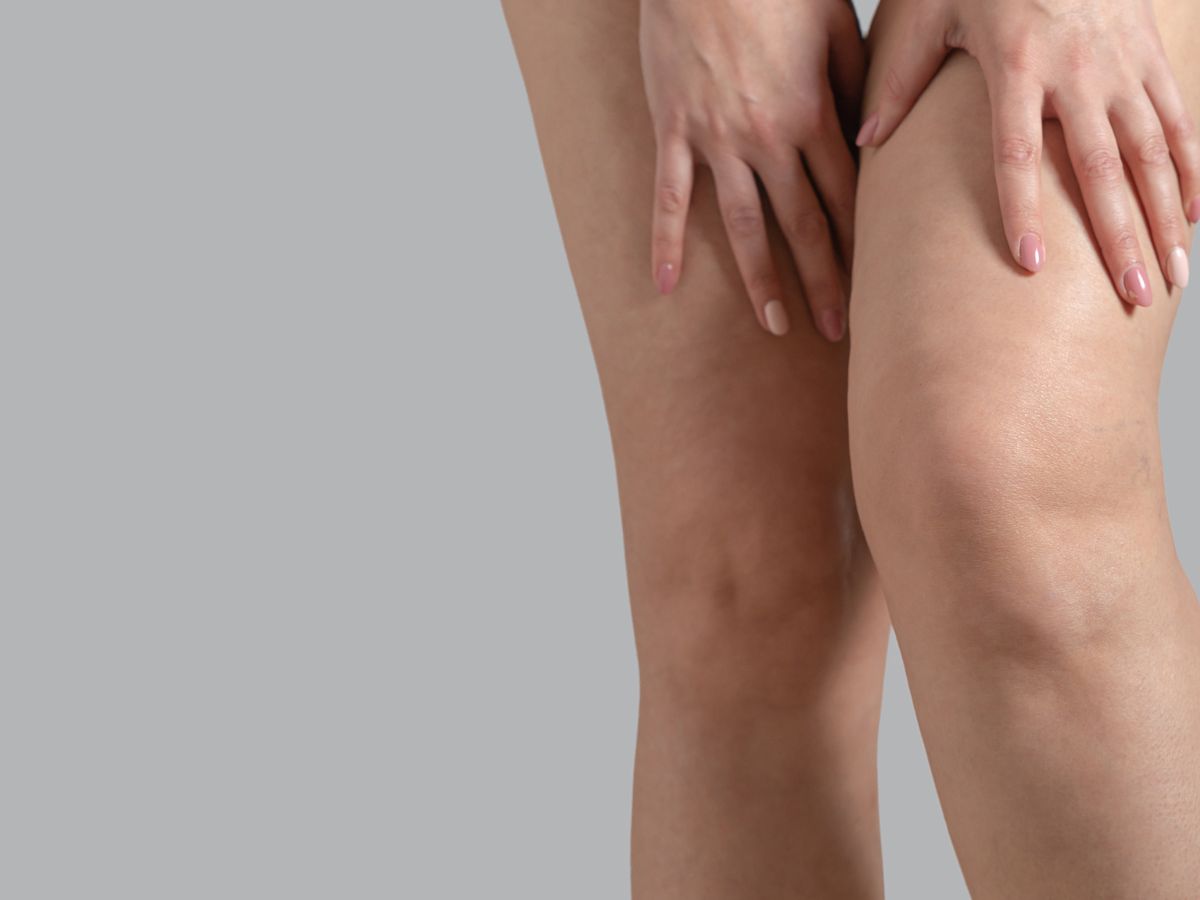Let's talk about something you're probably experiencing right now – postpartum fluid retention. It's that extra puffiness that’s hanging around after you’ve welcomed your little one into the world. Totally normal, totally manageable. In this blog post, we will break down postpartum edema as well as provide tips on how to naturally reduce leg swelling including hydration hacks, nutrition, and leg care.
Understanding Postpartum Swelling
First up, know that postpartum edema is just your body's way of getting rid of the extra fluid that supported you and your baby during pregnancy. When you're pregnant, your body goes through a kind of renovation to make space and support for your growing baby. Part of this process involves an increase in body fluids and blood volume – we're talking up to 50% more blood in your body by the end of pregnancy. That's like if you suddenly had an extra half a gallon of water in your system. This extra blood and fluid help make sure your baby gets all the nutrients and oxygen they need through the placenta and amniotic fluid.
During pregnancy, your hormone levels, particularly progesterone and estrogen increase significantly. They help relax the blood vessels to accommodate the extra blood volume, which is crucial because you're essentially the life support system for your little one.
Once your baby and the placenta are delivered – whether that's through vaginal delivery or cesarean – the hormone levels change. Your body gets the signal that it's time to return to its pre-pregnancy state, but it doesn't happen overnight. The hormone levels start to drop, and your body enters the "clean-up" phase. This is when the extra fluid that your tissues have been holding onto needs to get excreted.
Here's where things get puffy. The fluid that helped support the baby's weight and your expanded uterus is now looking for the exit. But because your hormone levels are still figuring out their new normal, and your blood vessels are still more relaxed than usual, this fluid can end up pooling, especially in the lower parts of your body. Hello, swollen feet and ankles!
The good news, is this is a common condition known as postpartum edema, and it's temporary. Your body is incredibly smart and starts to get rid of the excess fluid through urine and sweat. This is why drinking lots of water and engaging in regular, moderate exercise can be super helpful. It might seem counterintuitive to drink more water when you're trying to get rid of it, but staying hydrated actually helps your kidneys do their job in flushing out your system.
Your Support System
Your healthcare provider is your go-to resource during this time. They're there to keep an eye on things like blood pressure and overall blood flow.
Hydration is Key
It might seem a bit backward, but drinking plenty of water can actually help your body let go of excess fluid. Keep a water bottle nearby at all times – the EasyJug is perfect for this, especially since it's hands-free – and it will make sure you're getting the hydration you need without interrupting those precious moments with your baby.
Meet EasyJug: Your Hydration Hero
Crafted with care, the EasyJug is a 2.2-liter BPA-free water bottle designed to support moms in meeting their increased hydration needs with ease. This thoughtfully sized bottle ensures that you have enough water on hand for your day, minimizing the need for constant refills, which can be a hassle with a newborn in your arms.
Sip in Comfort: The 47-inch Straw
The standout feature of EasyJug is the 47-inch long straw. It's not just long; it's versatile. Whether you’re sitting up or lying down, the straw adjusts to your position. This means you can stay comfortably hydrated in any nursing position, even while lying down. Remember, lying down with your legs propped up with help reduce the swelling in your legs. Imagine being able to also drink water while you lay down?! This will benefit your recovery and reduce swelling even faster! In addition, the convenience of not having to sit up or reach out for a glass of water during those marathon nursing sessions can be a game-changer.
Hydration at Hand
With EasyJug, staying hydrated becomes one less thing to think about. You can keep it by your side throughout the day, and the generous capacity means you’re not constantly tracking how much you’ve drunk or worrying about when to get up and refill. It's particularly useful in the early postpartum weeks when your focus is on healing and caring for your little one.
Supporting Your Recovery and Breastfeeding Journey
Adequate hydration is key to supporting your milk supply and aiding in the postpartum recovery process. Your body requires extra fluids to produce milk and to recover from the delivery, whether it was a vaginal birth or a cesarean delivery. By making it easier to drink water, EasyJug supports these vital aspects of postpartum health.
The Bottom Line
EasyJug is more than just a water bottle – it’s an ally in your postpartum and breastfeeding journey. It offers convenience, capacity, and the peace of mind that you’re taking care of your body's hydration needs with ease. So you can focus on what truly matters – bonding with your baby and enjoying the precious moments of motherhood.
Eat Well, Feel Great
A healthy diet can do wonders for managing postpartum swelling. Foods like sweet potatoes, leafy greens, and fresh fruits have natural diuretic properties, which means they help your body eliminate excess fluid.
Here's a list of foods that are not only natural diuretics but also supportive of a new mom's nutrition needs, particularly for breastfeeding and postpartum recovery. Including these in your diet can help manage fluid retention and support overall wellness. Remember, though, always check with your healthcare provider before making significant changes to your diet, especially when breastfeeding.

-
Cucumber: High in water, low in calories, and can help reduce swelling. It’s refreshing, especially during hot weather.
-
Celery: This crunchy veggie has a high water content and can support the elimination of extra water from your body tissues.
-
Berries: Strawberries and raspberries contain vitamin B and antioxidants that support the immune system, and they're good for hydration too.
-
Leafy Greens: Spinach and kale are rich in minerals and have a mild diuretic effect without losing too much sodium.
-
Bananas: Rich in potassium, they can help manage fluid levels in your body and support your heart's health.
-
Garlic: Known for its potential to support blood pressure levels and might help with reducing water retention.
-
Watermelon: As the name suggests, it’s full of water and can be a tasty way to help flush out excess fluids.
-
Lemon: Adding lemon to your water can enhance its diuretic effect and make it more appealing to drink throughout the day.
-
Pineapple: Contains bromelain, an enzyme that may help with reducing swelling and improving digestion.
-
Tomatoes: Great for snacking or adding to salads, and they have a high water content.
-
Asparagus: This veggie has a natural diuretic effect and is also beneficial for your kidneys.
-
Beets: They are beneficial for liver detox and can help decrease water retention.
-
Cranberry Juice: Pure cranberry juice (not the sugary stuff) can help with reducing fluid accumulation and urinary tract health.
-
Grapes: Snack-friendly and loaded with nutrients and water, grapes can aid in reducing excess fluids.
-
Fennel: This herb has a natural diuretic effect and can also help with digestion.
-
Herbal Teas: Increase your water intake by drinking tea that is loaded with herbal benefits.
Also, reducing your sodium intake is a smart move – so maybe say a temporary goodbye to those salty snacks. High salt intake can make the swelling worse because it makes your body hold on to water. So, it's a good idea to watch how much salt you're adding to your food and steer clear of processed foods that tend to be high in sodium.

For most adults, the American Heart Association recommends no more than 2,300 milligrams a day and moving toward an ideal limit of no more than 1,500 mg per day for most adults. Breastfeeding mothers may need slightly more sodium to compensate for the amount excreted in breast milk. The key is balance and ensuring that sodium is not excessively restricted, which could potentially affect milk supply and overall health. For individualized recommendations, postpartum moms should consult with their healthcare provider or a registered dietitian
Leg Health
Wearing comfortable shoes and perhaps compression stockings can also be a great way to help your body along. These help support your blood vessels in getting that fluid moving back up and out of your body.
Foot exercises can be beneficial for postpartum edema. They help improve blood circulation, reduce swelling, and can also strengthen the muscles in your feet and lower legs, which supports your overall leg health. Here are some types of foot exercises that can be helpful:

-
Ankle Circles: Sit comfortably and lift one foot off the ground. Rotate your foot at the ankle, first clockwise and then counterclockwise. This can help mobilize fluids that have accumulated in the feet and lower legs.
-
Foot Pumps: Start by pointing your toes forward, then flex them back toward you. This simple movement can promote blood flow back towards your heart.
-
Heel and Toe Raises: Stand with your feet hip-width apart and simply raise your heels off the ground, balancing on your toes, then lower them back down. Afterward, lift your toes while keeping your heels on the ground. This exercise works both the calves and the muscles of the feet.
-
Toe Spreads and Curls: Sit with your feet flat on the floor and try to spread your toes apart without moving the rest of your foot. Hold the position and then relax. Follow this by trying to curl your toes downward.
-
Walking: Even a simple activity like walking can be very beneficial. It engages the muscles in your feet and legs, promotes healthy blood flow, and helps reduce swelling.
-
Toe Taps: While sitting, tap your toes on the ground repeatedly, as if you’re tapping along to a song. This can also help with fluid movement and leg muscle activation.
-
Marble Pickup: Place a few marbles on the ground and try picking them up with your toes. This can be a fun exercise and is great for improving the dexterity of your foot muscles.
-
Towel Scrunches: Place a towel flat on the floor and use your toes to scrunch it toward you. This action can strengthen the muscles on the bottom of your feet and help with circulation.
Remember to perform these exercises gently, especially in the first weeks postpartum when your body is still in the initial stages of recovery. As always, it's advisable to consult with your healthcare provider before starting any new exercise regimen, especially if you have any underlying health issues or experienced complications during delivery such as a cesarean section or deep vein thrombosis.

Elevation Magic
First, let’s talk about gravity. It’s not just a force that keeps us grounded; it can also help us heal. Elevating your legs is a fantastic way to encourage the accumulated fluid to travel back towards your heart, reducing swelling in your lower limbs. Try to elevate your legs several times a day, particularly after long periods of standing or sitting. Use a stool or lay down with your legs raised on pillows. This simple change can make a big difference, especially in the first week postpartum when swelling tends to be more pronounced.
The Right Squeeze with Compression Socks
Compression socks are your new best friend when it comes to managing postpartum edema. They apply gentle pressure to your legs, which can help prevent the accumulation of fluid in the tissue. The American College of Obstetricians and Gynecologists (ACOG) suggests that graduated compression stockings, which are tighter at the ankle and decrease in pressure going up the leg, are beneficial. These are especially recommended if you're at risk for health issues such as deep vein thrombosis (DVT) or if you've experienced significant weight gain during pregnancy.
The compression level recommended usually ranges from 15 to 20 mmHg for mild swelling, but if you have more severe edema or other medical conditions, your healthcare provider might recommend a higher compression grade. Always consult with your healthcare provider or a specialist to find out what type and level of compression is best for your situation.

Stay Active
Physical activity is your friend here. We're not talking anything intense – just some simple exercises or regular walks to keep your blood circulating well. This can really help with reducing the swelling. If you've had a cesarean delivery, make sure to check in with your healthcare provider about what exercises are safe for you to start with.
The Timeline
While most of the swelling goes down fairly quickly after birth, it's not unusual for it to take a few months before you feel completely back to your usual self. That's okay. Everyone's body is different, and there's no rush to bounce back.
Lifestyle Changes for the Win
By making some simple lifestyle changes – like staying hydrated, moving a bit every day, and eating a well-balanced diet – you're setting yourself up for a successful recovery. And if you're ever in doubt, your healthcare provider is there to support you and answer any questions you may have.
Conclusion
There you have it. Postpartum fluid retention is just one of the many things your amazing body is dealing with after the incredible feat of bringing a new life into the world. So be kind to yourself, stay hydrated, keep moving, and enjoy this special time with your new little one. You're doing great, and you've got this!
So, while you're taking care of your new baby, remember to take care of yourself too. Keep up with a healthy lifestyle, make good lifestyle choices, and give your body time to adjust back to its pre-pregnancy state. Your body has done something extraordinary, and it's going to take a bit of time to settle back into the rhythm of things.





